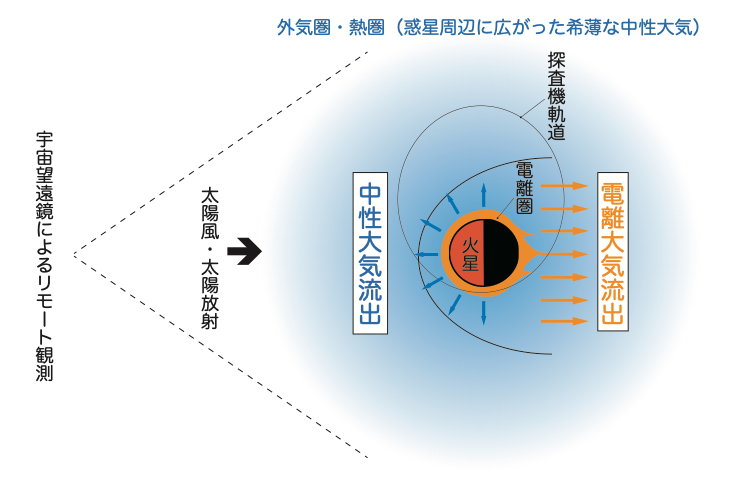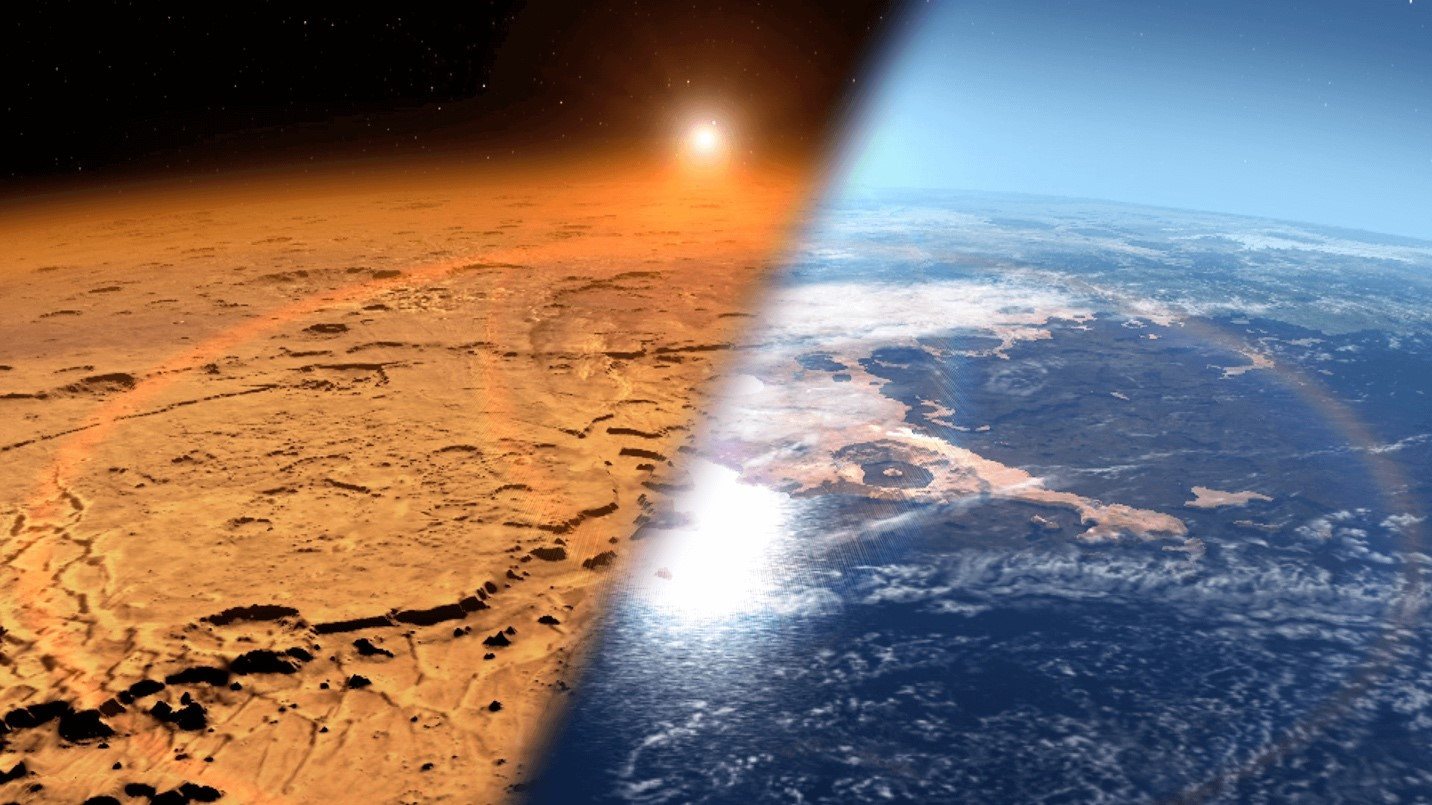地球の隣に位置する火星。現在は乾燥寒冷の地であり、生命の存在に適した環境ではありません。しかし、これまでの探査機の観測から、過去の火星は温暖で表面には液体の水(海)が存在していたと考えられており、生命の存在に適した環境がかつて存在した可能性があります(図1)。では、かつて存在した海はどこへ行ってしまったのでしょうか。1つの有力な仮説は、水がガスとして宇宙空間へ流出してしまったというものです。私はこの「大気流出」と呼ばれる現象を理解するため、火星探査機や宇宙望遠鏡を用いて火星の大気成分が宇宙空間へ逃げ出す仕組みを調べています(図2)。この研究の積み重ねが、火星の大気進化や気候変動の理解につながります。また、私は2026年打上げ予定の日本の火星衛星探査計画MMX(図3)にも参画しており、最近はMMXによる火星大気流出の観測に向けた予察研究も進めています。
講師 益永 圭(学士課程基盤教育院主担当)
Mars is located next to Earth. Currently, it is a dry and cold place, not a suitable environment for the existence of life. However, based on observations by previous spacecraft, it is thought that Mars in the past was warm and had liquid water (oceans) on its surface, and it is possible that an environment suitable for life once existed (Figure 1). One leading hypothesis is that the water has escaped into space as a gas. To understand this phenomenon called "atmospheric outflow," I have been studying how Martian atmospheric components escape into space using Mars rovers and space telescopes (Fig. 2). The accumulation of this research will lead to an understanding of Martian atmospheric evolution and climate change. I am also participating in Japan's Mars Mission 2020 (MMX) (Figure 3), which is scheduled to be launched in 2026, and have recently been conducting preliminary studies for observations of atmospheric outflow by MMX.
Kei Masunaga, Lecturer (in charge of the Graduate School of Core Ethics and Frontier Sciences, Bachelor's Program)



寄附・研究のお申し込みはこちら
いいね
3
会員ログイン